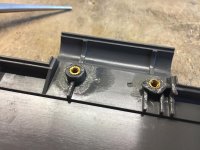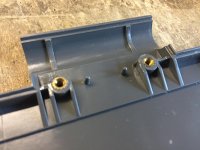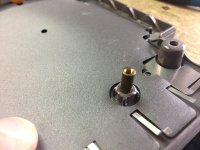Ferrix97
Well-known member
Hi!
A couple of weeks ago I started restoring a PowerBook with the typical issues: Bad caps on the display and stuck hard drive.
As usual, when I removed the front bezel and display, all the four supports crumbled into tiny pieces.
After seeing that glue doesn't always work and usually cracks again, I tried using my hot air station (the one I use to change SMD components) and melt together all the bits that fell off.
So far I've done a couple of experiments, still haven't figured out the best airflow/temperature setting, but the results are quite promising and the display opens and closes normally.
Sorry for the blurry photos, will try to make a video once I get another PowerBook with cracked plastics.



Oh, And while heating the plastic I did use a fume extractor.
A couple of weeks ago I started restoring a PowerBook with the typical issues: Bad caps on the display and stuck hard drive.
As usual, when I removed the front bezel and display, all the four supports crumbled into tiny pieces.
After seeing that glue doesn't always work and usually cracks again, I tried using my hot air station (the one I use to change SMD components) and melt together all the bits that fell off.
So far I've done a couple of experiments, still haven't figured out the best airflow/temperature setting, but the results are quite promising and the display opens and closes normally.
Sorry for the blurry photos, will try to make a video once I get another PowerBook with cracked plastics.



Oh, And while heating the plastic I did use a fume extractor.
